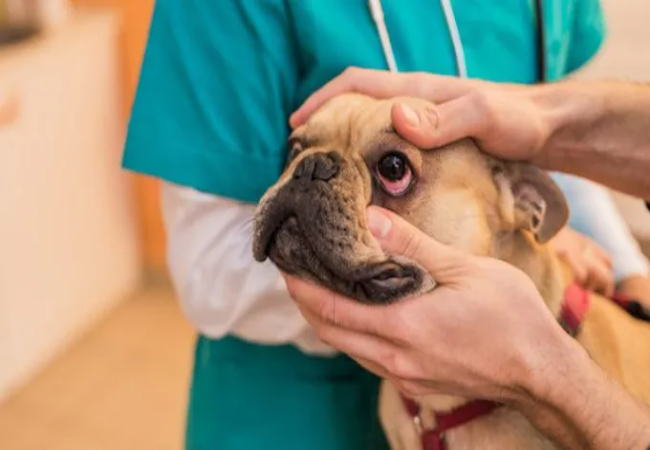Veterinary Guide to Key‑Gaskell Syndrome (Canine Dysautonomia) 2025 🐾

In this article
Veterinary Guide to Key‑Gaskell Syndrome (Canine Dysautonomia) 2025 🐾
By Dr. Duncan Houston BVSc
🧬 What Is Key‑Gaskell Syndrome?
Key‑Gaskell syndrome, also known as canine dysautonomia, is a rare degenerative disorder of the autonomic nervous system, resulting in failed unconscious control of bodily functions such as tear production, swallowing, gastrointestinal motility, bladder control, pupil function, heart rate, and breathing.
👥 Who’s Affected?
- Age: Predominantly affects young dogs under 3 years; cases are often reported in puppies.
- Geography: Higher incidence in rural areas, especially the U.S. Midwest.
- Prevalence: Very rare; often catastrophic when it occurs.
⚠️ Clinical Signs to Recognize
- Digestive: vomiting, diarrhea, constipation, regurgitation, abdominal pain, anorexia, profound weight loss.
- Ocular: dilated unresponsive pupils, protruding third eyelid, dry eye, photophobia, decreased tear production.
- Oral/nasal: dry mouth and nose, difficulty swallowing, drooling (xerostomia).
- Urinary: dysuria, urinary retention, or incontinence.
- Neurological/General: depression, lethargy, poor anal sphincter tone, bradycardia, megaesophagus leading to regurgitation or aspiration pneumonia.
- Cardiorespiratory: coughing, dyspnea; heart rate and blood pressure abnormalities.
🔍 Diagnosis: A Focused Approach
- History & physical exam: Core features like dry nose, dysphagia, GI stasis, urinary issues, ocular signs.
- Ocular tests: Schirmer tear <5 mm/min; pharmacologic pupillary tests (e.g., pilocarpine vs atropine challenge) ‑ abnormal response confirms autonomic impairment.
- Imaging: Chest radiographs show megaesophagus, aspiration pneumonia; abdominal imaging reveals ileus, gastric distension.
- Pharmacologic testing: Atropine or pilocarpine challenge, intradermal histamine test confirms ANS dysfunction.
- Lab work: Typically non-specific but may help exclude other conditions.
🛠️ Treatment: Supportive & Symptomatic
• Fluid Support & Nutrition
- IV/subcutaneous fluids to correct dehydration.
- E‑tube or soft elevated feedings to mitigate megaesophagus-related malnutrition.
• Ocular Care
- Artificial tears or ointments multiple times daily to protect the cornea.
• GI & Motility Medications
- Metoclopramide for stomach motility.
- Bethanechol to support bladder emptying.
- Antiemetics like maropitant (Cerenia) for vomiting episodes.
• Respiratory Care
- Antibiotics and hospitalization if aspiration pneumonia is diagnosed.
- Humidification & nebulization to ease cough and keep mucous membranes moist.
• Bladder Management
- Manual bladder expression or catheterization to prevent urinary retention and UTI.
• Additional Care
- Electrolyte support.
- Pain management & monitoring of heart rhythm for bradycardia.
📈 Prognosis
- Grave, high mortality—many dogs die from aspiration pneumonia or severe autonomic failure.
- Rare spontaneous improvement over months, but most survivors require extensive lifelong care.
- Early intervention & supportive care may offer a chance for slow recovery, although often partial.
🏡 Home Care & Long‑Term Management
- Continue E‑tube or assisted feeding at home.
- Maintain tear lubrication and nasal/mouth moisture.
- Employ humidifiers, nebulizers, and gentle chest physiotherapy.
- Assist with bladder emptying as needed.
- Monitor closely for coughing, lethargy, or appetite loss—seek veterinary attention promptly.
📱 Ask A Vet Telehealth Support
- 📸 Send photos of eyes, nose, and mucous membranes to evaluate dryness.
- 📹 Videos to assess swallowing, coughing, and breathing.
- 🔔 Medication reminders and feeding schedule alerts.
- 🩺 Video follow‑ups to monitor recovery, adjust fluids, and bladder support.
🎓 Case Spotlight: “Harper” the Young Retriever
Harper, an 18-month-old Retriever, presented after two days of vomiting, anorexia, dilated pupils, and megaesophagus. Tear production was nearly absent. Diagnosis confirmed via rapid pupil response to pilocarpine challenge. She received fluid therapy, E‑tube support, tear ointment, metoclopramide, and weekly airway humidification. Over 3 months, her pupil function and bladder control returned, though mild regurgitation persisted. Ask A Vet coordinated supplies, scheduled check‑ins, and guided her safe at‑home tube feeding. At 6 months, Harper maintained a good quality of life with ongoing care—a testament to the value of early supportive intervention. 💛
🔚 Key Takeaways
- Key‑Gaskell syndrome is canine dysautonomia: a rare, degenerative failure of the autonomic nervous system in young dogs.
- Signs include gastrointestinal stasis, ocular dryness, pupil dysfunction, urinary issues, megaesophagus, and bradycardia.
- Diagnosis relies on history, ocular/pharmacologic testing, and imaging.
- Treatment is entirely supportive: fluids, nutrition, ocular and urinary care, and respiratory support.
- Prognosis is poor; recovery is rare but possible with aggressive and consistent care.
- Ask A Vet telehealth enables expert remote triage, medication guidance, supply delivery, and monitoring for improved outcomes. 📲🐶
Dr Duncan Houston BVSc, founder of Ask A Vet. Download the Ask A Vet app to get remote support—from early detection to nutrition, ocular therapy, hydration, respiratory care, and bladder assistance 🐶📲






